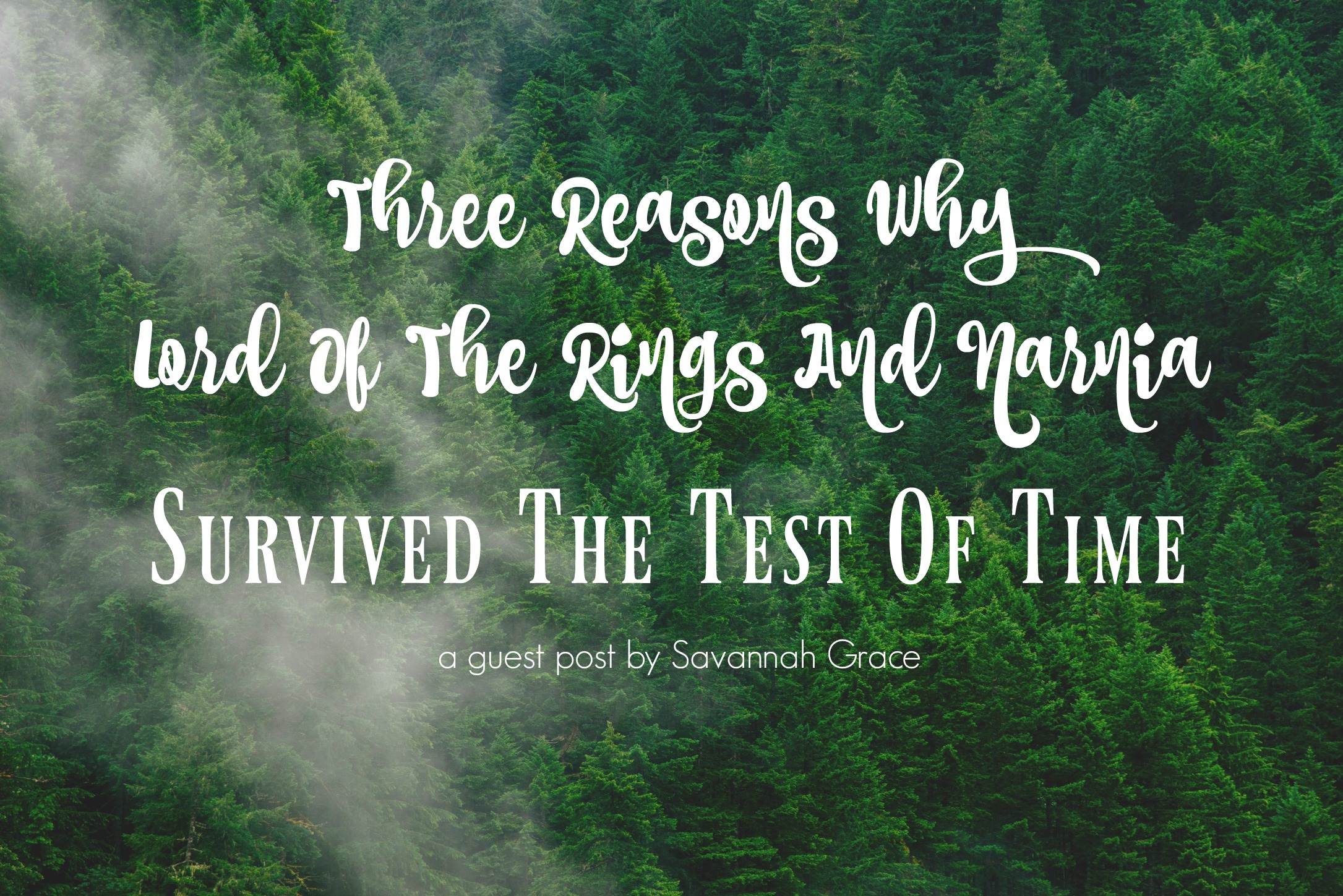Happy Monday, readers! As you can see, we have our first-ever guest post today, by the lovely Savannah Grace! So enjoy the post, and hop over to Savannah’s beautiful blog, Scattered Scribblings, here.
“One Ring to rule them all, One Ring to find them …”
“Once there were four children whose names were Peter, Susan, Edmund, and Lucy.”
I think almost every writer or reader of fantasy would know which books these two quotes are from – and neither of the books are modern! Both of them are over sixty years old – so what helped Lord Of The Rings and Narnia survive the test of time? And how can we help our stories do the same?
1. Both Authors Took Risks
Fantasy was still a new thing when J.R.R. Tolkien and C.S. Lewis wrote their stories – a lot of people consider them the ‘Founding Fathers Of Fantasy’. Fantasy wasn’t a popular thing back then like it is today, so it was a little risky to write a story like Lord Of The Rings or Narnia. But, looking back at these authors, and other authors whose books have lasted, I’ve learned that it can really pay off to take risks.
It’s hard to really hard “go out on a limb” with our stories nowadays – it feels like every idea has already been thought of and used! But one of the important things to learn about writing is that no one writes the same way. Two people could write a story with the same premise, and the stories would still be so different. Which means that it might not just be an idea that you can take risks with – it can be your writing style plus the idea that is a risk. And sometimes risks seriously pay off ;).
2. The Characters Are All Unique, Realistic, And Easy To Relate To
The Pevensie siblings are some of the most realistic characters – the childlike innocence of Lucy, the feeling of responsibility for his siblings that Peter had, Edmund’s jealousy, and Susan’s caution. All of the siblings are unique from each other, and they’re all easy to relate to.
Same thing goes for Lord Of The Rings. Not only are the character different from each other in personality (I don’t think anyone would mistake Gimli’s personality for Gandalf’s!), but J.R.R Tolkien has different races of people in his story, which makes each character even more different from the others.
One of the easiest ways to make sure all of your characters are different is to put them side-by-side and see if the story would change much if you cut one. If the answer is ‘no’, then you’ve probably got a character or two that isn’t quite needed in the story. And if the answer is ‘yes’, then well done! Keep your story-people realistic, unique, and easy-to- relate-to, and you’ll have a cast of winning characters on your hands.
3. The Books’ Themes
Honestly, I think this one is the most important. Books always stick around when they have powerful themes, because – no matter what time we live in, or what the circumstances are -there are just some themes that we’ll always be able to relate to. The Lion, The Witch, And The Wardrobe (the most well-known Narnia book, in my opinion), has themes of redemption and sacrifice. The Lord Of The Rings has themes of courage and hope.
It’s easy for books to survive when they have themes that everyone can relate to, no matter how long ago the book was written. Some themes, like bravery and love and never-giving- up, are never going to run out of steam, because they’re some of the themes that will always play a big part in real life.
Let’s take risks, writers. Your story could be the next one to survive the test of time.
“Courage, dear heart.”
~ Savannah Grace


